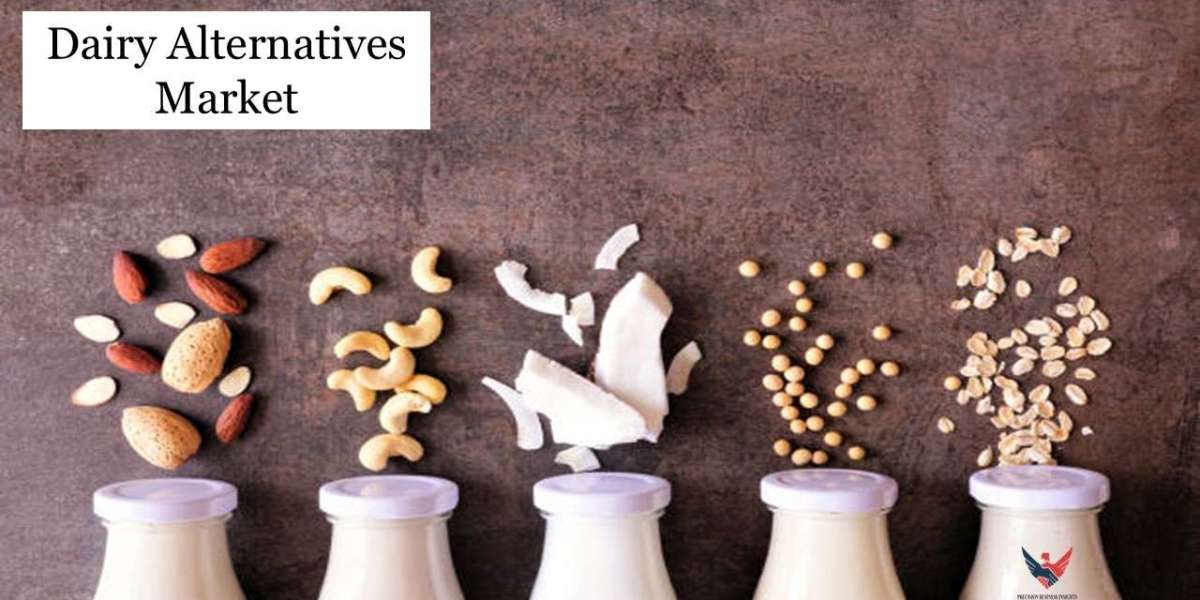The Thermoform Packaging Market is seeing significant growth, particularly from industries like dairy, meat, and seafood processing. As consumer preferences evolve toward fresher, more convenient products, the demand for packaging solutions that can preserve product quality, extend shelf life, and ensure safety is on the rise. Thermoform packaging, with its versatility, tamper-evidence, and protective qualities, is becoming the go-to solution for packaging perishable goods in these sectors.
Rising Demand for Freshness and Protection
The dairy, meat, and seafood industries face constant pressure to meet growing consumer demand for high-quality, fresh products while ensuring that these products are protected during storage and transportation. Thermoform packaging is uniquely suited to these needs because it provides an airtight and moisture-resistant environment that helps preserve the product's integrity.
1. Dairy Industry’s Shift Toward Sustainable Packaging
In the dairy industry, thermoform packaging is increasingly used for yogurts, cheeses, and milk-based products. With consumer health and sustainability in mind, manufacturers are seeking packaging solutions that keep their products fresh and extend shelf life without compromising on the environmental impact. Recyclable and biodegradable thermoform materials are being incorporated into packaging for dairy products, aligning with growing regulatory pressures and consumer preferences for eco-friendly packaging.
Thermoformed trays and containers are commonly used to package single-serve yogurts, cheese slices, and butter, offering a secure seal that helps maintain freshness and prevents contamination. Additionally, clear thermoform packaging allows consumers to easily see the product, enhancing its appeal.
2. Meat Packaging Solutions Focused on Safety and Freshness
The meat processing industry also benefits from the superior protective properties of thermoform packaging. Products such as fresh meat, sausages, and processed meats require tamper-evident, moisture-proof, and airtight packaging to maintain freshness and safety.
For example, vacuum-sealed thermoform packaging is used for packaging cuts of meat and ground products, ensuring a longer shelf life by removing excess air that can contribute to spoilage. The ability to form customizable packaging tailored to different shapes and sizes of meat cuts provides manufacturers with flexibility, reducing waste and improving packing efficiency.
In addition, modified atmosphere packaging (MAP) technologies are often integrated with thermoformed packaging for meat products, where a controlled mixture of gases is used to preserve product quality and extend freshness. This is particularly important in fresh meat and delicatessen products that require long shelf life and preservation of taste and texture.
3. Seafood Processing Industry Demands Protective Packaging
In the seafood processing industry, products such as fish fillets, shrimp, and shellfish are highly sensitive to temperature fluctuations and spoilage. Thermoform packaging offers a moisture-resistant solution that helps maintain the freshness and taste of these perishable items.
The use of thermoform packaging in seafood is particularly beneficial for fresh products that require quick consumption, as well as frozen seafood that must be preserved under optimal conditions. Tamper-evident seals are important in the seafood industry to ensure consumer confidence in product integrity and quality. The clear nature of thermoformed trays also makes it easier for consumers to inspect the product before purchase, which is crucial for high-quality seafood.
Additionally, biodegradable and recyclable thermoform packaging materials are being used in the seafood industry to address concerns about plastic waste, especially with increasing regulatory scrutiny over single-use plastics. As sustainability continues to be a key focus for both consumers and governments, manufacturers are responding by developing more environmentally friendly packaging alternatives.
Advantages of Thermoform Packaging for Perishable Goods
Thermoform packaging offers several key advantages for the dairy, meat, and seafood processing industries, including:
1. Extended Shelf Life
The airtight and moisture-resistant nature of thermoform packaging helps extend the shelf life of perishable products. By preventing exposure to oxygen and contaminants, thermoform packaging helps slow down the process of spoilage, which is essential for meat, dairy, and seafood items that have relatively short shelf lives.
2. Tamper-Evident Protection
Thermoform packaging provides tamper-evident seals that ensure products are not tampered with during handling and transportation. This is particularly important in the meat and seafood industries, where maintaining product safety and quality is critical to consumer trust and regulatory compliance.
3. Customizable Designs
Thermoform packaging can be easily customized to fit the shape and size of a wide variety of products, from cheese wedges to large cuts of meat. This customization capability allows manufacturers to reduce packaging waste and optimize storage space, leading to more efficient operations.
4. Clear Visibility
Clear thermoform materials offer excellent visibility, allowing consumers to easily inspect the product before purchase. This is especially beneficial in the dairy, meat, and seafood industries, where freshness is a primary concern.
5. Eco-Friendly Materials
As sustainability becomes a key consideration, manufacturers in the dairy, meat, and seafood industries are turning to recyclable and biodegradable thermoform materials. These materials help reduce the environmental impact of packaging waste, aligning with global initiatives to curb plastic pollution.
Market Trends Driving Thermoform Packaging in Dairy, Meat, and Seafood Industries
Consumer Health Focus: With consumers becoming more health-conscious, the demand for fresh, natural, and organic food products is increasing. Thermoform packaging, which preserves the quality and nutritional content of products, is in high demand in the dairy, meat, and seafood sectors.
Sustainability Pressure: As more consumers demand eco-friendly packaging and governments impose stricter regulations on plastic waste, the shift toward recyclable and biodegradable thermoform materials is gaining momentum. The dairy, meat, and seafood industries are focusing on reducing their environmental impact by adopting more sustainable packaging solutions.
Technology Integration: The integration of modified atmosphere packaging (MAP) and vacuum sealing into thermoform packaging is on the rise, especially for meat and seafood products that require extended shelf life. These technological innovations allow for better preservation and food safety, making them critical to the success of perishable packaging solutions.
Rising E-Commerce: The growth of online food retail and home delivery services is creating new opportunities for thermoform packaging. Frozen meat, dairy products, and fresh seafood require secure, protective packaging for transportation, and thermoform packaging ensures products arrive intact and fresh.
Conclusion
The Thermoform Packaging Market is poised for strong growth, driven by increasing demand from the dairy, meat, and seafood processing industries. As consumer preferences continue to shift toward fresher, more convenient, and sustainable products, thermoform packaging provides an ideal solution for maintaining product freshness, safety, and quality. The advances in packaging materials and technology are helping the market evolve to meet the needs of both consumers and regulatory bodies, positioning thermoform packaging as a key player in the future of perishable goods packaging.








